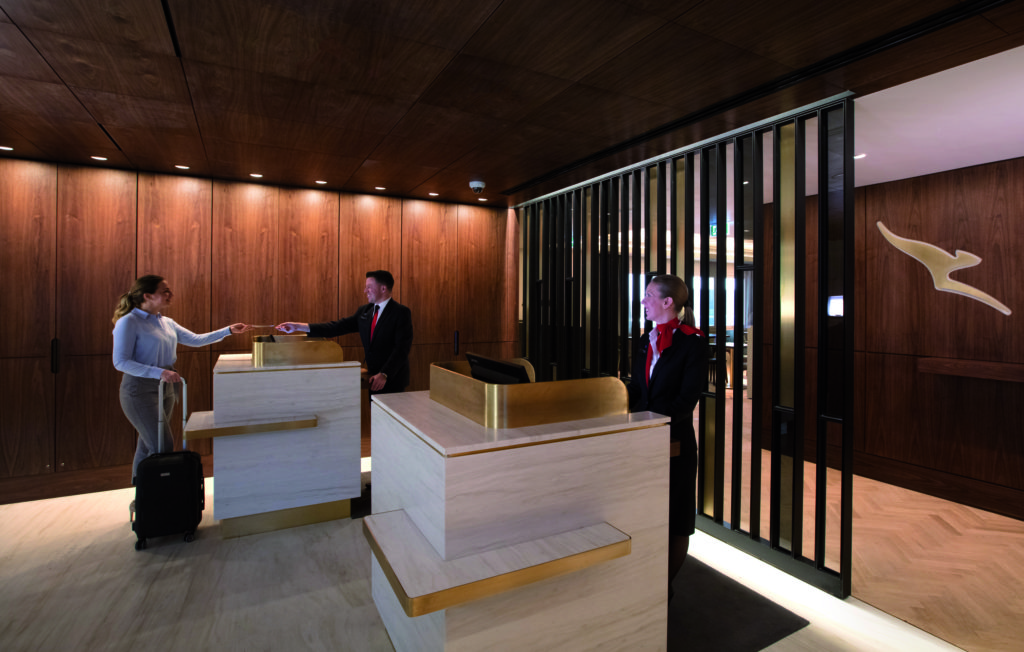As advances in technology hurtle us closer to the ideal of a seamless passenger journey, airports and airlines must put aside their competing agendas to provide travelers with the best experience possible.
Matthew Abbott, aviation sector leader (Australasia) for global architecture firm Woods Bagot, discusses the pivotal roles that technology and cooperation will play in airports of the future
The reason a strained relationship sometimes exists between airlines and airports is because of their opposing preferences for passenger behavior in the airport terminal. Airlines want passengers at the boarding gate for timely take-off, while airports prioritize dwell time in the hope it will lead to idle spending.
Having travelers arrive at the airport early will ease this tension and, by airlines and airports working together to harness advances in technology and data collection, every traveler could be enticed by an improved and personalized experience.
Innovations in biometrics are becoming increasingly prevalent at airports. Set to replace all forms of travel documentation, biometric technology uses statistical analysis of travelers’ physical and behavioral characteristics to create automated recognition systems. Soon, our face, eye, fingerprints or even the way we smell will act as bio-identifiers that allow us to be processed by airport security in less than 10 seconds.
Single token travel
Contactless processing will eliminate the need for conventional airport touchpoints such as gates, with automated recognition making way for more passenger-focused terminals rather than environments that herd travelers from one processing step to another.
Already, airports are looking to integrate a six-step seamless journey that uses facial recognition in place of a travel document. The proposed system utilizes bio-technology to create a travel token that simplifies the step-by-step process of checking in, bag drop, boarder control, security screening and boarding.
Other instances see the same technology used to ensure seamless access to airline lounges. In these examples, we are beginning to see airports collaborate with airlines in order to streamline the travel experience.
In 2017 Canberra Airport became the first in Australia to trial contactless border technology that scanned faces rather than passports. Trialled in international arrivals, the four Smart Gate machines demonstrated potential to cut passenger processing time from one minute to 15 seconds, correctly matching 94% of travelers with new ‘face on the move’ recognition technology.
Long processing times and easy to lose documentation will soon be a thing of the past. The next frontier is allowing passengers to reliably calculate their journey time from curb to gate. Not only will this relieve airport anxiety by allowing passengers to have the flexibility to choose how they spend their time airside, but the change will also encourage a sharper focus on convenience in order to attract a loyal – and spend-happy – passenger.
To bring it about, airports and airlines need to work together to understand the needs of passengers and apply that knowledge to create the internal environments and services that facilitate flexibility and experiences relevant to the traveler.
Personalized experience
More needs to be known about each passenger passing through the terminal. Data collection – more than just flight schedules – and, equally important, interpretation to predict how passengers will behave in the airport, will inform the airport of the future.
Combined with biometric technology, the data will contribute to the passenger experience in two key ways: firstly, by removing the process and physical boundaries and, secondly, by allowing us to recognize, locate and track the traveler and their behavior.
Each creates a more efficient terminal that allows designers to focus on facilitating a unique and personalized journey. The traveler’s customer experience can be made more relevant and terminals can begin to strike the right balance between security processing, dwell and on time performance.
The increased focus on personalizing experience lends itself to working with retail and hospitality to create offers and services tailored to each customer. Airports in the UK, for example, have convinced retailers to offer duty-free discounts to all travelers – not just those leaving the EU – enticing more airport spending. With incentives such as a complimentary beverage at an airport restaurant, a discount at a favored retailer, or even an adjustment in featured offerings according to incoming passenger preferences, airlines and airports would be both rewarding loyalty and personalizing the passenger journey.
In Hong Kong, smartphone apps that allow shoppers to purchase or ‘wish list’ goods before they even leave for the airport, and have them waiting for them when they arrive, are enabling shoppers to browse for their favorite items before arriving.
Apps will also enable airlines to further alleviate airport anxiety and complement the retail experience. Services such as personalized text messages for staggered boarding rather than an all-inclusive announcement and the ability to customize their journey via the app from home will mean that time within the terminal can be spent shopping and dining.
The need to register one’s biometric identity via smartphone prior to arriving at the airport will open up a new communication channel between airlines, airports and passengers. Real-time flight information, wayfinding and the timely communication of any delays in bag collection and beyond will go a long way in allowing airport and airlines to work together to choreograph the passenger experience down to the last second, particularly if there was a way to track each passenger’s location via the app.
To ensure their success, airports and airlines of the future must collectively sharpen the focus on curating a personalized customer journey that integrates elevated retail and hospitality offerings.
Biometrics and sophisticated use of data and app technology will enable designers to create specialized terminals that are a destination in their own right.
Bio:
 Matthew Abbott has more than 14 years’ experience working on international aviation projects, largely focusing on the design leadership of airport terminal interiors. His extensive experience also includes the design of shell and core architecture, and non-aviation projects across Europe, the Middle East, Asia, the USA and Australia.
Matthew Abbott has more than 14 years’ experience working on international aviation projects, largely focusing on the design leadership of airport terminal interiors. His extensive experience also includes the design of shell and core architecture, and non-aviation projects across Europe, the Middle East, Asia, the USA and Australia.

